High Speed DDR2: Buffalo and Crucial Deliver 1000+
by Wesley Fink on July 7, 2006 12:05 AM EST- Posted in
- Memory
DDR2 667 (4:5) Performance
The incredible timings possible with new Micron DDR2 memory chips are well-illustrated in performance at DDR2-667. While the differences in performance compared to past DDR2 are not huge, all 3 DDR2-1000 parts are stable at 3-2-3 to 3-3-3 timings, and all three outperform other tested DDR2 2GB kits in every benchmark.
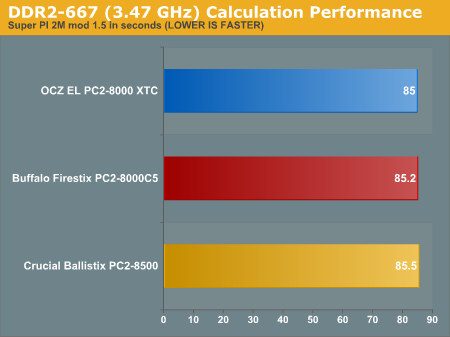
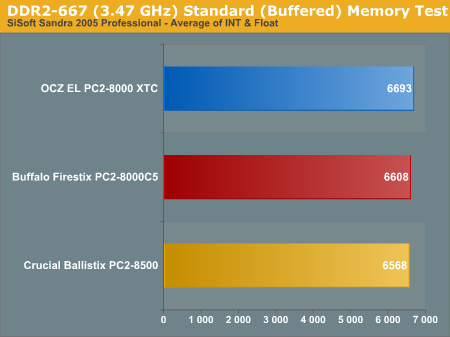
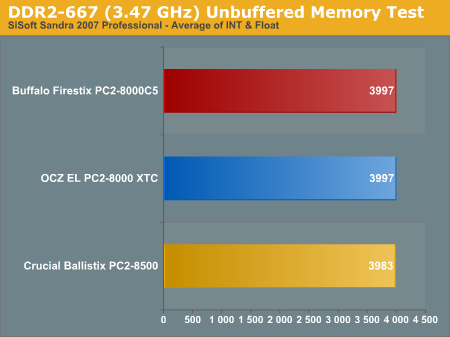
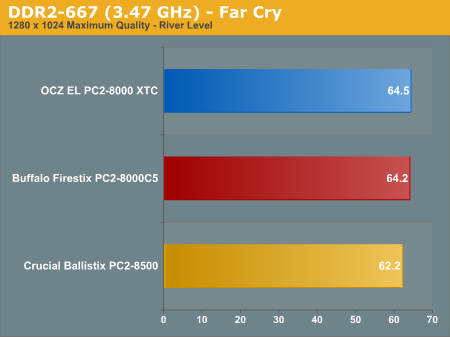
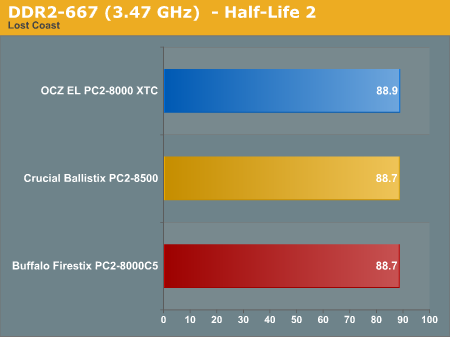
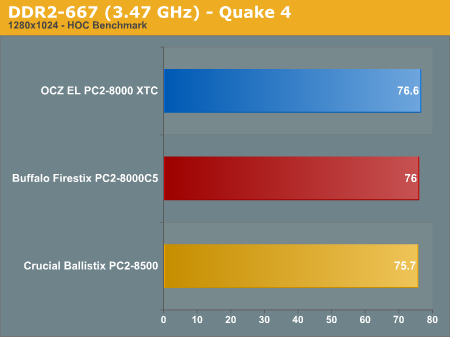
The incredible timings possible with new Micron DDR2 memory chips are well-illustrated in performance at DDR2-667. While the differences in performance compared to past DDR2 are not huge, all 3 DDR2-1000 parts are stable at 3-2-3 to 3-3-3 timings, and all three outperform other tested DDR2 2GB kits in every benchmark.
















24 Comments
View All Comments
JarredWalton - Friday, July 7, 2006 - link
We're working on more memory reviews, and Corsair's offering will be reviewed soon.araczynski - Monday, July 10, 2006 - link
didn't know that was an option, but that's ok, with the adblock solution i get to kill many birds with one stone.araczynski - Friday, July 7, 2006 - link
...i'm getting fed up with the damn intellitext ads all over the place, anyone know of a surefire way to block that crap?TIA
araczynski - Friday, July 7, 2006 - link
NM, found adblock for firefox, brilliant!JarredWalton - Friday, July 7, 2006 - link
Another option is to simply http://www.anandtech.com/siteinfo.aspx?intelli=y">turn it off in your site preferences. :)lopri - Friday, July 7, 2006 - link
Excellent review in that it shed light on DDR2 testing methodology on Intel platform. I should admit that I'd been quite ignorant about DDR2 scaling to this date. This article exaplains alot about the way Intel platform works and how dividers are used - in plain English. It seems, in a sense, it's easier to test memory on Intel platform, especially once Conroe arrives, with so many dividers available at any given CPU clock.Thanks for an excellent review. BTW, when can we expect the P5W-DH review and/or DFI 975X Infinity review?
lop
*nitpick1 : On page 5, there is a typo. ;)
Wesley Fink - Friday, July 7, 2006 - link
Thanks, Lopri. The typo is now corrected.Now that AMD has moved to DDR2 with AM2, memory dividers and memory speeds work exactly the same, with standard supported speeds to DDR2-800.
The P5W-DH review will post next week.
semo - Saturday, July 8, 2006 - link
why don't you make a dedicated error reporting section for each article?last page fifth paragraph:
shoudln't that be "amd platform"
Wesley Fink - Saturday, July 8, 2006 - link
We were talking about how Intel handles memory speed which is why AMD was not also mentioned. DDR-533 is DDR-533 on BOTH the Intel and AMD platform. However, the CPU clock speed on the AMD platform is 400, while the bus speed on the Intel is 1066. AMD double pumps 200 on the clock to achieve 400, while the latest Intel processors quad pump 266 to achieve 1066. The BASE speed is still 200 AMD and 266 Intel.1:1 on the AMD is therefore DDR2-400, but Hyper Transport and the on-chip memory controller on AM2 means the memory speed or ratios don't really matter. There is no penalty for running AM2 at ratios, but there is a very slight penalty for running Intel at other than 1:1 (DDR2-533) - in the range of 1% to 5% memory bandwidth reduction.
The AM2 has massive DDR2 memory bandwidth, but it is not memory-starved and really can't use the extra bandwidth in the current CPU design. It might matter more in future AMD designs.
semo - Sunday, July 9, 2006 - link
ok thanks i think i get it now. and it's a shame amd can't take advantage of the advances ddr2 has made (apart from the reduction in penalty going from ddr to ddr2)